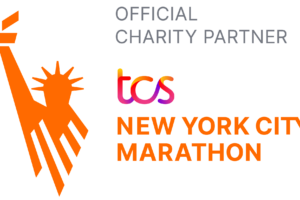MASAB Memo #4, January 30, 2018
Can we improve warfarin therapy by monitoring at home?
by Jack Ansell, MD, MACP, Hofstra Northwell School of Medicine, New York
 A person’s success on oral anticoagulant therapy with a vitamin K antagonist (i.e. warfarin or Coumadin®) is highly dependent on how well therapy is managed. The goal is to keep an individual in the therapeutic INR range, which is the range that results in the greatest reduction in new or recurrent blood clots with the least risk of major bleeding (1). The greater the time-in-range (TTR), the better the outcomes.
A person’s success on oral anticoagulant therapy with a vitamin K antagonist (i.e. warfarin or Coumadin®) is highly dependent on how well therapy is managed. The goal is to keep an individual in the therapeutic INR range, which is the range that results in the greatest reduction in new or recurrent blood clots with the least risk of major bleeding (1). The greater the time-in-range (TTR), the better the outcomes.
Warfarin is managed well by anticoagulation clinics, but it is inconvenient for patients who have to travel frequently to a clinic or laboratory and have blood drawn for an INR (2,3). The development of hand-held INR monitors over the last 20 years, allowing individuals to perform their own INR at home (home monitoring) from a fingerstick drop of blood has not only eliminated the inconvenience of laboratory testing, but has also led to greater effectiveness with similar safety compared with traditional clinic monitoring (4). The ability of most anticoagulated patients to perform a fingerstick INR was demonstrated in a large Veterans Administration trial, where just under 3,000 patients were studied and 80% successfully performed an INR after a brief training (5). The conclusion has also been confirmed in reviews of other studies of home monitoring.
For example, Bloomfield et al. (6) evaluated 22 trials with 8,413 patients and found a significant reduction (36%) in mortality, a significant reduction in major thromboembolism (42%), and no significant increase in major bleeding for those assigned to home monitoring versus standard care. Heneghan et al. (7) performed an individual patient data meta-analysis of 6,417 patients from 11 randomized trials and found a significant reduction in thromboembolic events in the home monitoring group (49%), with no significant difference in major bleeding or mortality. A Cochrane Collaborative review (8) also found an improved quality of life in patients who monitored their INRs at home and showed that home monitoring significantly reduced thromboembolic events (53%). Home monitoring resulted in a similar rate of major bleeding as standard therapy.
All of these reports come from clinical trials testing one form of management or another, but do not necessarily reflect real-world outcomes of patients who monitor their therapy at home. A recent report of over 29,000 patients monitoring their INR at home outside of a clinical trial showed that excellent time in therapeutic range can be achieved. In this study (the STABLE trial) (9), patients referred to an Independent Diagnostic Testing Facility (an entity that provides home monitoring instruments) to arrange for home monitoring with dosing guided by the referring physician or an anticoagulation clinic showed that patients can achieve excellent TTR. Increased TTR was associated with increased frequency of testing. Of those patients who tested their INR weekly, a TTR of 73% was achieved, whereas for those who tested their INR less frequently (variable frequency between 2-4 weeks) a TTR of 69% was achieved. In both groups, these TTR averages are much better than reported in usual care, in many anticoagulation clinic populations, and in many clinical trials. In all patients in the US on warfarin for stroke prevention in atrial fibrillation, the average TTR is only about 55%(10). The weekly testers also experienced fewer critical values defined as an INR of < 1.5 or > 5.0 compared to those who tested less frequently. This real-world experience suggests that high quality anticoagulation management can be achieved by patients outside of clinical trials who monitor their own INR at home.
Home monitoring provides four major benefits. These include: 1) convenience for the patient; 2) the ability to monitor an INR frequently; 3) consistency of testing reagents and instrument; and 4) patient empowerment by involvement in their own care. It is particularly beneficial for those individuals who travel and monitor their INR while away from home. In general, patients must be willing, able, and compliant with monitoring to be considered for home monitoring. In the U.S., the National Blood Clot Alliance promotes this model of anticoagulant care and INR home monitoring is recommended by the most recent guidelines of the American College of Chest Physicians. (11)
In summary, INR home monitoring has proven to be safe, effective and as good, if not better, than anticoagulation clinic care. Age is not a barrier to use, and older individuals perform as well as younger patients. Home INR monitoring provides convenience, facilitates more frequent monitoring and has the potential to reduce adverse events in patients on warfarin. The outcomes of warfarin therapy, when well managed, are hard to beat, and the best outcomes are achieved in patients managed by specialized anticoagulation clinics or by home INR monitoring.
References
- Wan Y, Heneghan C, Perera R, Roberts N, Hollowell J, Glasziou P, Bankhead C, Xu Y. Anticoagulation control and prediction of adverse events in patients with atrial fibrillation: A systematic review. Circ Cardiovasc Qual Outcomes 2008;184-91.
- Ansell J, Hirsh J, Hylek E, Jacobson A, Crowther M, Palareti G. The pharmacology and management of the vitamin K antagonists: ACCP evidence-based clinical practice guidelines. Chest 2008;133:160S-198S.
- Phillips K, Ansell J. The Outpatient Management of Oral Vitamin K Antagonist Therapy: Defining and Measuring High Quality Management. Exp Rev Cardiovas Therap 2008;6:57-70
- Ansell JE. Optimizing the Efficacy and Safety of Oral Anticoagulant Therapy: High Quality Dose Management, Anticoagulation Clinics, and Patient Self-Management. Semin Vas Med 2003;3:261-269.
- Matchar DB, Jacobson A, Dolor R, Edson R, Uyeda L, Phibbs CS, Vertrees JE, Shih MC, Holodny M, Lavori P, and the THINRS Executive Committee. Effect of home testing of international normalized ratio on clinical events. N Eng J Med 2010;363:1608-20.
- Bloomfield HE, Krause A, Greer N, Taylor BC, MacDonald R, Rutks I, Reddy P, Wilt TJ. Meta-analysis: Effect of patient self-testing and self-management of long-term anticoagulation on major clinical outcomes. Ann Intern Med 2011;154:472-482.
- Heneghan C, Ward A, Perera R, and the Self-Monitoring Trialist Collaboration. Self-monitoring or oral anticoagulation: systematic review and meta-analysis of individual patient data. Lancet 2012;379:322-334.
- Garcia-Alamino JM, Ward AM, Alonso-Coello P, et al: Self-monitoring and self-management of oral anticoagulation. Cochrane Database Syst Rev (4):CD003839, 2010.
- DeSantis G, Hogan-Schlientz J, Liska G, Kipp S, Sallee R, Wurster M, Kupfer K, Ansell J. Warfarin Home Monitoring Achieves Excellent INR Control in Non-Study Setting. Amer J Managed Care 2014;20:202-209.
- DeSantis G, Hogan-Schlientz J, Liska G, Kipp S, Sallee R, Wurster M, Ansell, J. Warfarin home monitoring achieves excellent INR control in non-study setting. Amer J Manag Care Real-world warfarin patients achieve and maintain high time in target range, showing suitabi9lity for patient self-testing across all age groups. Amer J Hematol 2012;87 (suppl):S149.
- Dlott JS, George RA, Huang X, Odeh M, Kaufman HW, Ansell J, Hylek EM. A national assessment of warfarin anticoagulation therapy for stroke prevention in atrial fibrillation. Circulation 2014;129:1407-1414.
- Holbrook A, Schulman S, Witt DM, Vandvik PO, Fish J, Kovacs MJ, Svensson PJ, Veenstra DL, Crowther M, Guyatt GH. Evidence-based management of anticoagulant therapy . Chest 2012;141(suppl):e152S-e184S.






